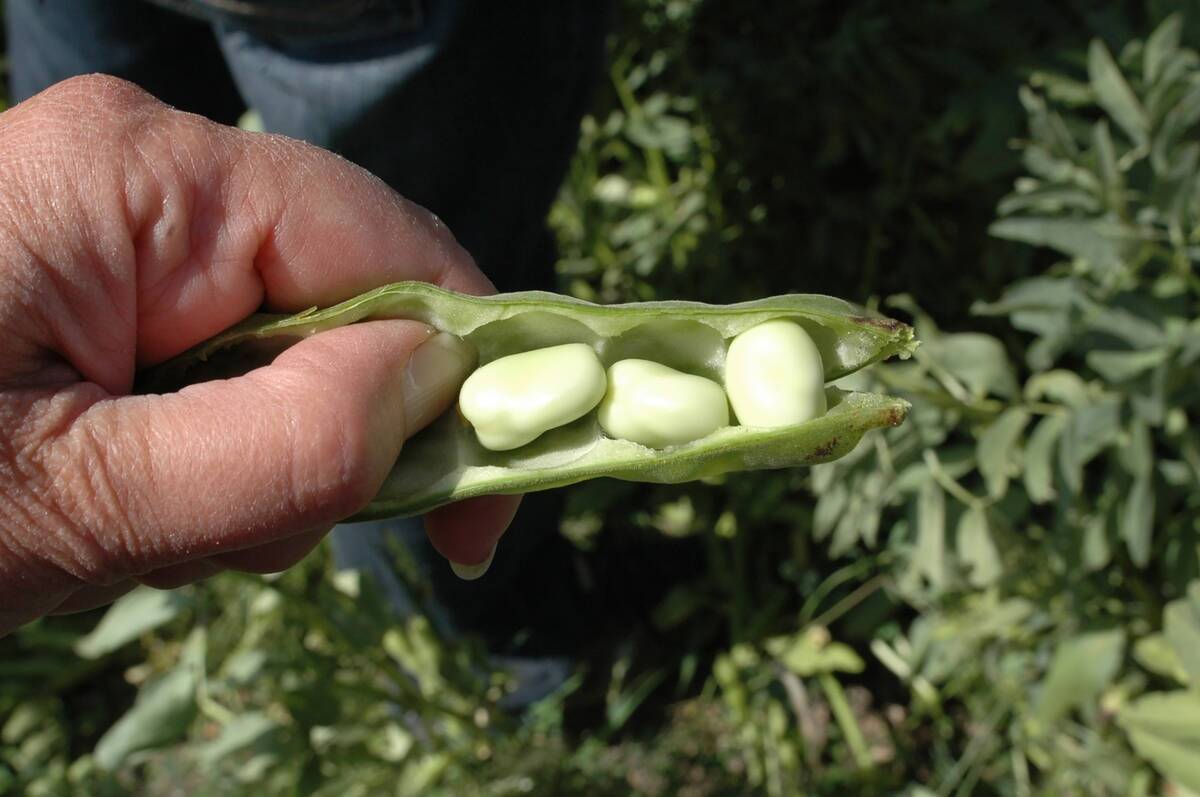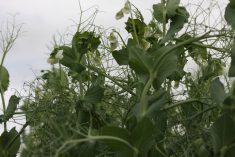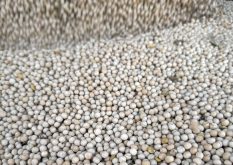For Alberta producers thinking about adding fababeans to their rotation, 2026 may be the year to start doing so, at least from a crop insurance perspective.
The Agriculture Financial Services Corp. (AFSC) has updated its normals — yield expectations in a given risk area that help determine insurance coverage — to reflect provincial fababean production reported from 2000-24.
As a result, producers who insure fababeans for less than five years will see an increase in their coverage.
Read Also

VIDEO: Catch up with the Western Producer Markets Desk
The Western Producer Markets Desk provides daily updates on agricultural markets, with recent video commentary including looks into canola, wheat, cattle and feed grains.
The change was made in response to concerns expressed by Alberta Pulse Growers about the crop’s normals being too low for the higher yields it has achieved in recent years.
This resulted in lower amounts of coverage than production warranted, says Shane Strydhorst, a central Alberta crop producer and chair of APG.
The insurer analyzed fababean production data from the past two decades and found APG’s assessment correct.
“We did the analysis and the data to see what we needed to do, and we increased the start-up normals for the risk areas where fababeans are grown,” said Nancy Smith, AFSC product co-ordinator.
AGP hopes this adjustment will take some of the financial risk out of growing the beans while also offering an incentive for producers to try planting them on their own farms.
Strydhorst calls the move “fantastic.”
“Just by having this increase in dollar coverage per acre, it does remove an obstacle by reducing the risk that the farmer is taking on.”
Under the changes, coverage steadily shifts from being 100 per cent based on area normals in the first year to 100 per cent based on the producer’s historical production in the fifth.
“It’s divided by 20 per cent so you start out at 100 per cent of the area normal,” says Smith.
“And then, as we take your information (through) your harvested production report, we’re going to put in 20 per cent of yours and use 80 per cent of the normal (in the second year). And then we’ll put in 40 per cent of yours and 60 per cent of the area normal.
“And it’ll start to change to be just about what you do, not what the area can do.”
Fababeans have been steadily growing in acreage in Alberta over the past few years. AFSC expects around 50,000 insured acres of the beans by the crop reporting deadline of June 20, says Smith. It’s a small jump from 47,000 acres in 2024, but a leap from the previous year’s 37,000.
Looking at acreage from a more historical perspective, Strydhorst says fababean numbers tend to jump around, depending on whether the year is dry or wet. Fababeans grow best in high rainfall areas or under irrigation, he says, limiting the pulse’s best growing areas to a handful of regions in Alberta.
“They’re grown in quite a few different areas of the province. There’s a little bit in southern Alberta on irrigation. There’s quite a bit in what I would consider central Alberta focused around Edmonton.
“There’s some (fababean) farmers around Sylvan Lake, Lacombe. They’re really successfully growing them around Camrose, New Norway, Fort Saskatchewan, and of course where I’m located, which is the Barrhead-Westlock area.”
He says any region that consistently receives at least 250 millimetres of rain per year is a candidate for fababean production.
“(For) areas of the province where there’s generally less rainfall or less consistent rainfall, then they could be a risky crop to grow.”
However, they tend to grow very well in areas with the appropriate conditions.

“I know farmers in each of these areas that have harvested 70 to 80 bushels (per acre) of fababean crops. A farmer that I know from Fort Saskatchewan even topped 100 last year.”
Strydhorst’s own luck has improved over the more than a decade he’s been planting the beans.
“The last couple years, I think maybe we’ve just got dialed in a little bit better with fine-tuning our production. And we’ve seen fair consistency in those 60, 70, 80 bu. crops the last number of years, which is kind of exciting.”
Due to his region’s long growing season, which usually starts in late April or early May, Strydhorst’s fababeans are the first crops planted and the last one harvested.
“They’re very tolerant of cool soil and cool weather in the spring, so there’s not really a risk with planting early. Basically, as early as we can get in the field when it’s not too muddy, we’re trying to get our fababeans in.
“Some years we do experience frost damage, but that hasn’t really impacted feed market opportunities for fababeans. So there’s always been a market for them.”
Smith praised the strong relationship AFSC has with APG, adding faba bean normals will be reviewed on an annual basis.
“They’re the people who are representative of producers. We listen to the individual client for sure, (but) sometimes the voice comes through a little bit stronger through these industry groups.”
Strydhorst shared a similar sentiment.
“For as long as I’ve been on the board — and long before that — Alberta Pulse and AFSC have had a really good long-term working relationship.
“We have our meeting every summer, usually in July or August, where several staff and several of the directors from Alberta Pulse meet with AFSC staff at their office in Lacombe and we talk about pulse crop insurance coverage and improvements that can be made on behalf of farmers.”
















